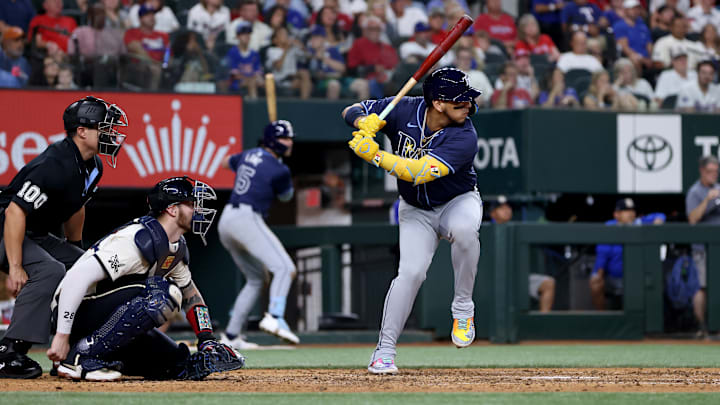UT Amed Rosario - .303/.328/.415
A valuable plug-and-play kind of guy, Rosario seems to have rediscovered his stride after taking a step back in 2023. Similar to Dylan Moore, he's able to split time between the middle infield and the outfield, specifically right field. This means that he could be a solution to either the Polanco problem at second base or the Haniger hitch in right field.
While he doesn't hit for a ton of power, the key aspect that stands about his playstyle is his high batting average. The Mariners are tied with the White Sox for the lowest team batting average in MLB at .220 - not a recipe for success. Furthermore, they don't need a ton of power with names like Cal Raleigh and Mitch Garver providing home runs at the price of their own batting averages.
Free curds courtesy of the @culvers sign!
— Tampa Bay Rays (@RaysBaseball) April 13, 2024
(And a triple by @Amed_Rosario, of course) pic.twitter.com/BGjxdA13GG
He keeps his strikeout rate low (16.8%) but has an awful chase rate (38.4%), a curious combination. He's also a defensive liability, already amassing -7 outs above average and -9 defensive runs saved despite only appearing in 68 games so far.
Like Lowe, Rosario's contract ends with the season. Unlike Lowe, he has no team options and is already on a very affordable $1.5 million deal for the year. No matter whose place he takes on any given day, the Mariners will have to hope that his offensive contributions will be able to outweigh any defensive mishaps he ends up making. Luckily for Seattle, run prevention has been less of a problem than run creation this year so the decision should be, for the most part, pretty easy.
